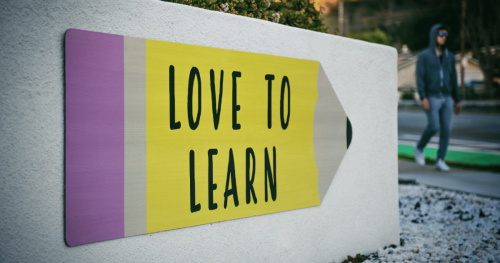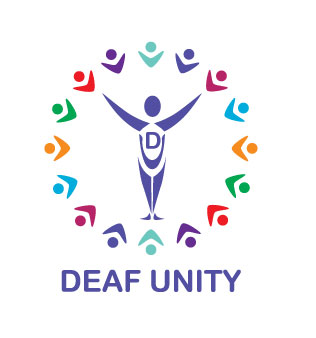
Deaf children in mainstream schools face challenges to their learning which their hearing peers don’t experience. Teachers with deaf students in their class need to use inclusive strategies to assist their learning.
Here are 7 teaching strategies that will help empower your deaf students to do their best in school and set them up for success at college, university and in the workplace.
1) Ensure there is a clear line of sight

Photo by NeONBRAND on Unsplash
You can help your hard-of-hearing students by inviting them to sit at the front of the classroom if they want to. If your student is using an interpreter or relying on lip-reading, visual clues or a hearing aid, being closer to the front will help them learn.
Ensure you are facing the classroom when you speak, not the whiteboard. Good lighting is also a must so they can see you clearly.
Speak normally and clearly, emphasising keywords. Repeat and rephrase when necessary.
If you are organising a group activity, help students who lip-read by positioning the group in a circle so that the deaf learner can see all the other participants as they speak.
2) Provide written handouts & visual aids
Deaf learners who are lip-reading, watching an interpreter or using a hearing aid may find it difficult to take notes from a whiteboard at the same time. So your deaf students don’t miss anything important, make all information and announcements from class available as a written handout.
Visual aids and learning materials are a great way to support deaf learners but it’s important not to rush through visual content, particularly when you are speaking at the same time.
Give your deaf learners time to look at the visual content and take it in before you start speaking. They need time to switch between the visual and the auditory.
3) Show captioned or interpreted video
If you are using video as part of your class teaching, try to find captioned or sign language interpreted options. If these aren’t available, consider how else to engage your deaf student with the learning material in the video.
The most important thing for teachers is to be as inclusive as possible every step along the deaf learners’ journey.
4) Reduce background noise

Photo by Element5 Digital on Unsplash
For students who use a hearing aid, it helps if you reduce the amount of background noise in the room. Easier said than done in some noisy classrooms! Besides managing student behaviour, however, think of other ways you can limit background noise in the room. Can you close the windows and doors, for example?
Clearly repeating questions or responses from other students in the class will help your deaf learners understand what their classmates are saying.
You want your deaf and hard-of-hearing students to feel included in your class conversations. Ask them how they will feel most comfortable participating in class discussions.
5) Use available resources
You could consider learning sign language and encourage other class members to learn sign language too. Additionally, you can use the technology available to assist deaf learners.
For example, if possible, allow deaf students to record the lesson with live remote captioning, or provide a recording of the lesson yourself so that a transcript can be made available later.
Some hearing aids have a transmitter and receiver system with a clip-on microphone for the speaker so find out if this equipment might be useful to your deaf student.
Send your students copies of your teaching notes and any visual aids you used in the lesson. Wherever you can, make use of resources like peer tutoring, special educators, interpreters, notetakers, therapy services and teacher aides.
6) Check-in with your deaf students
Make sure your deaf students know that you are there for them and adjust your teaching strategies according to whatever they feel comfortable with.
Respecting their choices is important. You want to help empower them to be the best learners they can be. Before, during and after a lesson check that they have understood what you are teaching and repeat anything they ask you to repeat.
According to the deaf health charity, Sign Health, deaf children are 30% to 50% more likely to experience mental health challenges, compared to hearing children. If your deaf student is experiencing challenges to their mental health, it is important as their teacher that you know how you can help.
Fortunately, there are specialised resources out there that help children cope and understand their emotions, thoughts and feelings. The National Deaf Child and Adolescent Mental Health Service (NDCAMHS) works with D/deaf children and young people aged 0 – 18 who have emotional or behavioural issues. Deaf4Deaf offer psychological therapies for students and can support in getting this support funded. For students over the age of 18, Sign Health offers Psychological Therapy services in BSL too.
Sign Health has a range of BSL Health video resources to help deaf or Deaf people get the information they need to thrive.
7) Adapt your teaching for distance-learning strategies
While online and remote learning is far from a new concept, the COVID-19 pandemic has forced many teachers to rapidly adapt their in-class teaching methods to help students learning from home.
The lack of face-to-face communication has, however, added another barrier to the Deaf Community in accessing information and feeling connected. To learn some tips on coping with COVID-19 when you are deaf or know a deaf person, read this article and check out the BSL translation.
A lot of the above tips for teaching deaf learners are still relevant for distance learning. If you are teaching via Zoom, for example, it’s important to ensure the lighting is good. Set yourself up in a quiet area to reduce the background noise that could interfere with closed captioning or transcripts.
Are you a teacher wanting to know more ways to support your deaf or hard-of-hearing student? Contact us and we will help.
Conclusion
Teaching has got to be one of the most creative, innovative jobs out there. There simply isn’t a one size fits all approach to teaching. Therefore, the most dedicated teachers adapt their methods according to whatever their students need.
If you have deaf or hard-of-hearing students in your class, you need to adapt your teaching methods to best support their learning with inclusive strategies.
The suggestions above are also beneficial for students who have other barriers to learning, like auditory processing disorders, dyslexia, etc. If we create environments that enhance and support the education of students with more barriers to their learning, it can actually benefit everyone in the room.
It’s okay to make mistakes along the way as long as you are open to feedback, use the resources out there and work closely with the deaf students to empower them to learn.
Key takeaways:
- Set your deaf and hard-of-hearing students up for success by adapting your teaching methods to support their learning.
- Prepare your classroom. Ensure they have a clear line of sight to you at all times and reduce background noise by shutting the classroom door, for example. Speak normally but clearly and emphasise keywords.
- Use the technology, resources and visual aids available to support your deaf students’ learning. Include them in the plan of action so they feel empowered and you know what they are comfortable with.


I am a teacher for the deaf/HoH in my parish. Is there a PDF version of this information? Many of the teachers who work with our students would benefit by a paper copy of this.
The strategies mentioned here are quite practical and doable, although every class and student is different.